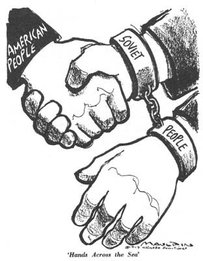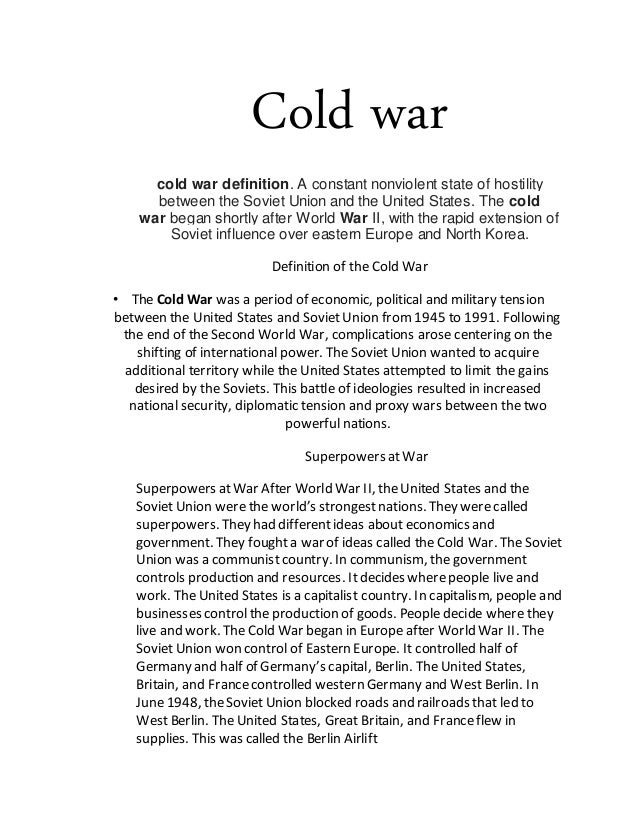

This emergence of democratic states in the post-Cold War era has influenced international relations dynamics and has led to receding number of major conflicts between great powers in the world. These states, much like the majority of other states in the world, have also adopted a democratic system to replace the former authoritarian system. After that, the fall of the Soviet Union marked the fall of communism in the international sphere as well as the rise of independent states that used to be part of the union.

Following the world wars, the world saw the fall of colonialism and the rise of young democratic sovereign states. The proposition of the Democratic Peace Theory states that democratic states do not go to war against each other and can be used to explain the relatively peaceful international system in the post–Cold War era due to the lack of major powers war. Hence, in an era where democracy is the dominant system in the world, the frequency of major power war has diminished. This is because the values embedded in liberal democratic framework actively support the promotion of peace, various attributes and practices of democratic states also factor in the process of maintaining peace. The emergence of liberal democratic states make the essay of Perpetual Peace, Kant that stated to attain peace, states must first be democratic. The international system is currently in a long peace era after the Cold War there are no major power wars with devastating effects. The structure of a democratic state also makes it harder for the head of the state to declare war. The phenomenon of the USA that become the sole world super power makes liberal ideology and democracy also hold strong influence in the international sphere. The emergence of democratic states in the post–Cold War era has influenced international relations dynamics and has led to receding number of major conflicts between great powers in the world, and after the dissolution of the USSR, it impacted the international system in several ways. Raih Q1, Journal of ASEAN Studies menjadi salah satu jurnal terbaik untuk studi Asia Tenggara.They should be expanded and adapted to changed circumstances. Consequently, American-dominated Cold War-formed institutions such as NATO are positive tools for international stability and peace. The politically prevailing view in the US today is that the US prevailed over the Soviet Union in the Cold War. The cause of US and Soviet conflict is still debated some argue it was due to mutual fear, others argue that one or the other was bent on imperial expansion, and still others argue that both were bent on imperial expansion. The Cold War established the template for international conflict between nuclear powers. The US and the USSR and their allies and clients therefore competed indirectly through competitive interference in the internal politics of third actors. This conflict was labelled cold because nuclear weapons made direct military combat between the two likely to result in mutual suicide through escalation to so-called mutual assured destruction. It began at the close of the Second World War and continuing until Soviet-installed communist regimes collapsed in Eastern Europe in 1989 and the USSR itself disintegrated in 1991.


Intense bipolar international competition for influence and control between the United States and the Union of Soviet Socialist Republics (USSR). The efficacy of this six-word story induction process is evaluated, and the extracted six-word stories are applied to cyberwar potentials during the Fourth Industrial Revolution (4IR). These resulting six-word stories are analyzed along multiple dimensions: data sources (government, journalism, academia, and social media), expert calls-and-crowd responses, and by time periods (pre-cyberwar and cyberwar periods). The resulting inducted six-word stories are used to (1) describe and summarize the underlying textual information (to enable a bridge to a complex topic) (2) produce insights about the underlying textual information and related in-world phenomena and (3) answer particular research questions. From curated “cyberwar” text sets (from government, mainstream journalism, academia, and social media), six-word stories are computationally induced (using word frequency counts, text searches, word network analysis, word clustering, and other means), supported by post-induction human writing.


 0 kommentar(er)
0 kommentar(er)
